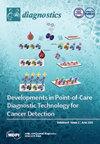Daniel García Iglesias, David Ledesma Oloriz, Diego Pérez Diez, David Calvo Cuervo, Rut Álvarez Velasco, Alejandro Junco-Vicente, José Manuel Rubín López
下载PDF
{"title":"Triage-HF Validation in Heart Failure Clinical Practice: Importance of Episode Duration.","authors":"Daniel García Iglesias, David Ledesma Oloriz, Diego Pérez Diez, David Calvo Cuervo, Rut Álvarez Velasco, Alejandro Junco-Vicente, José Manuel Rubín López","doi":"10.3390/diagnostics15121476","DOIUrl":null,"url":null,"abstract":"<p><p><b>Introduction:</b> The prevention of heart failure (HF) exacerbation is crucial for patient prognosis, and preventive treatment for potential symptoms and warning signs is essential in this context. The TriageHF © algorithm has been retrospectively validated and has demonstrated good correlation with HF episodes. This study analyzes the effectiveness of the TriageHF © algorithm in routine clinical practice, emphasizing the role of episode duration in its predictive capacity. <b>Materials and methods:</b> From October 2017 to October 2020, all patients who received a Medtronic Amplia DR implant were prospectively selected for analysis. To evaluate the algorithm's diagnostic capacity, it was compared with the clinical diagnosis of HF episodes during follow-up. <b>Results:</b> The sustained moderate-risk (more than 7 days) and high-risk alerts both showed high positive predictive values (11.25% and 27.27%, respectively), along with an increase in the relative risk of HF, particularly in high-risk alerts (hazard ratio is 46.21 times higher than for sustained moderate-risk alerts). Furthermore, there was higher event-free survival in real low-risk alerts than in both sustained medium-risk and high-risk alerts (<i>p</i> < 0.01). <b>Conclusions:</b> TriageHF © can predict the worsening of patients with ICD CRT. Medium-risk alerts lasting less than 7 days do not pose a greater risk of HF episodes, while high-risk alerts, regardless of their duration, are highly correlated with HF episodes.</p>","PeriodicalId":11225,"journal":{"name":"Diagnostics","volume":"15 12","pages":""},"PeriodicalIF":3.0000,"publicationDate":"2025-06-10","publicationTypes":"Journal Article","fieldsOfStudy":null,"isOpenAccess":false,"openAccessPdf":"https://www.ncbi.nlm.nih.gov/pmc/articles/PMC12191922/pdf/","citationCount":"0","resultStr":null,"platform":"Semanticscholar","paperid":null,"PeriodicalName":"Diagnostics","FirstCategoryId":"3","ListUrlMain":"https://doi.org/10.3390/diagnostics15121476","RegionNum":3,"RegionCategory":"医学","ArticlePicture":[],"TitleCN":null,"AbstractTextCN":null,"PMCID":null,"EPubDate":"","PubModel":"","JCR":"Q1","JCRName":"MEDICINE, GENERAL & INTERNAL","Score":null,"Total":0}
引用次数: 0
引用
批量引用
Abstract
Introduction: The prevention of heart failure (HF) exacerbation is crucial for patient prognosis, and preventive treatment for potential symptoms and warning signs is essential in this context. The TriageHF © algorithm has been retrospectively validated and has demonstrated good correlation with HF episodes. This study analyzes the effectiveness of the TriageHF © algorithm in routine clinical practice, emphasizing the role of episode duration in its predictive capacity. Materials and methods: From October 2017 to October 2020, all patients who received a Medtronic Amplia DR implant were prospectively selected for analysis. To evaluate the algorithm's diagnostic capacity, it was compared with the clinical diagnosis of HF episodes during follow-up. Results: The sustained moderate-risk (more than 7 days) and high-risk alerts both showed high positive predictive values (11.25% and 27.27%, respectively), along with an increase in the relative risk of HF, particularly in high-risk alerts (hazard ratio is 46.21 times higher than for sustained moderate-risk alerts). Furthermore, there was higher event-free survival in real low-risk alerts than in both sustained medium-risk and high-risk alerts (p < 0.01). Conclusions: TriageHF © can predict the worsening of patients with ICD CRT. Medium-risk alerts lasting less than 7 days do not pose a greater risk of HF episodes, while high-risk alerts, regardless of their duration, are highly correlated with HF episodes.
心力衰竭临床实践中经检-心力衰竭验证:发作持续时间的重要性。
导读:预防心力衰竭(HF)恶化对患者预后至关重要,在这种情况下,对潜在症状和警告信号进行预防性治疗是必不可少的。TriageHF©算法已经过回顾性验证,并显示与心衰发作有良好的相关性。本研究分析了TriageHF©算法在常规临床实践中的有效性,强调了发作持续时间在其预测能力中的作用。材料与方法:前瞻性选择2017年10月至2020年10月所有接受美敦力Amplia DR种植体的患者进行分析。为了评估该算法的诊断能力,将其与随访期间心衰发作的临床诊断进行比较。结果:持续中度风险(超过7天)和高风险预警均显示出较高的阳性预测值(分别为11.25%和27.27%),同时HF的相对风险增加,特别是高风险预警(风险比为持续中度风险预警的46.21倍)。此外,真正的低风险警报的无事件生存率高于持续的中等风险和高风险警报(p < 0.01)。结论:TriageHF©可预测ICD CRT患者病情恶化。持续时间小于7天的中等风险警报不会增加心衰发作的风险,而无论持续时间长短,高风险警报都与心衰发作高度相关。
本文章由计算机程序翻译,如有差异,请以英文原文为准。

 求助内容:
求助内容: 应助结果提醒方式:
应助结果提醒方式:


